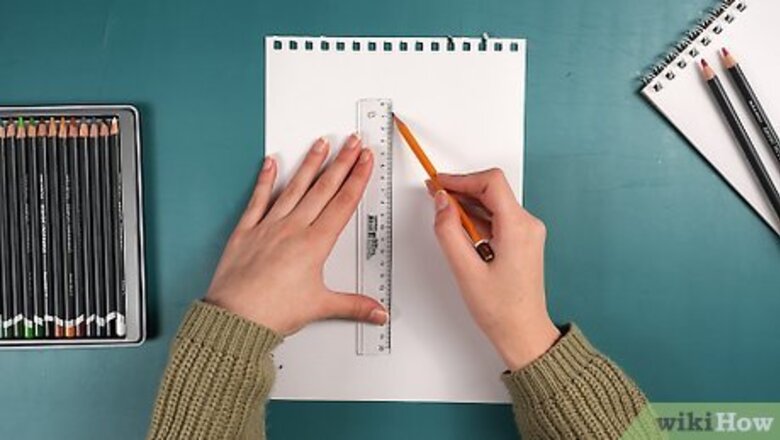
views
How to Draw a Simple Eiffel Tower
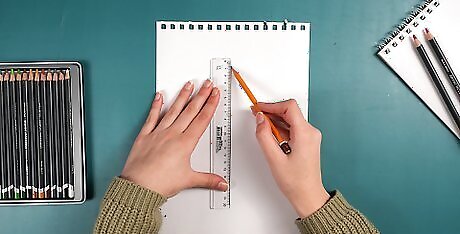
Draw a straight guide line down the middle of your paper. Lay your paper vertically so you can fit the entire tower on your sheet. Use a pencil and ruler to make a straight vertical line down the center of the page. Make sure there’s a small gap between the top and bottom of the page and the center line so you have room to draw the tip and legs of the tower. Work lightly so you can easily erase your marks if you make a mistake. You can still draw the Eiffel Tower on a horizontal piece of paper, but it would be much smaller than one drawn vertically.
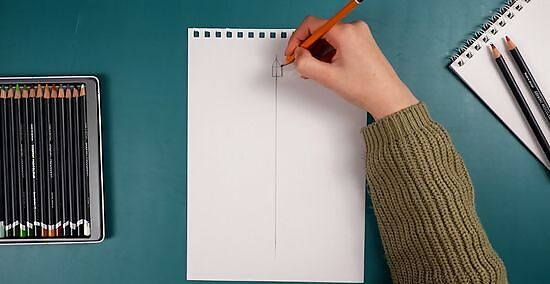
Add a square with a triangle on it to the top of the line. Draw a square about the size of your thumb nail with the guide line going through the middle. Then, add a triangle with a steep point on top of it. This will become the Eiffel Tower’s viewing platform and antenna. Don’t draw the square and triangle too big or else you won’t be able to draw the rest of the tower proportionally correct.
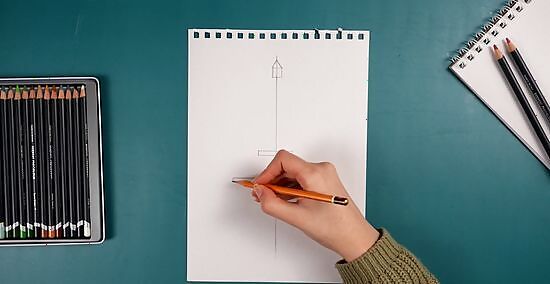
Draw 2 horizontal rectangles perpendicular to the line for the viewing platforms. Find the halfway point of the center guide and make a narrow rectangle that’s about twice the width of the square. Then, find the halfway point between that rectangle and the bottom of the line. Make the second rectangle about twice the length of the first one.
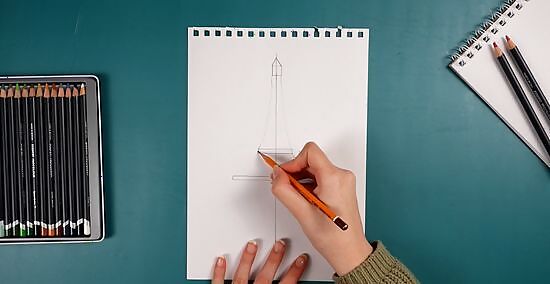
Draw curved lines to connect the square to the bottom rectangle. Place your pencil on one of the bottom corners of the square on top. Draw a curved line down so it goes through the top corner of the upper rectangle and ends at the top corner of the lower rectangle. Repeat the process from the other bottom corner of the square on the opposite side of your tower. Don’t extend the curved lines all the way to the bottom of the page since the legs on the bottom of the Eiffel Tower are straighter.
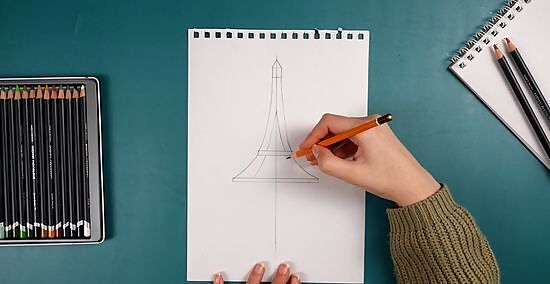
From the center of the guideline, draw another set of curved lines. These should be parallel to the lines in the previous step. Start about a third of the way down the center guide. Draw a line on one side of the guide so it follows the same curve as the line you just drew. End the curved line so it’s about a third of the way in from the end of the bottom rectangle. Repeat the process for the other line. It’s okay if your curves aren’t perfectly parallel with one another since the Eiffel Tower starts to get wider near the bottom.
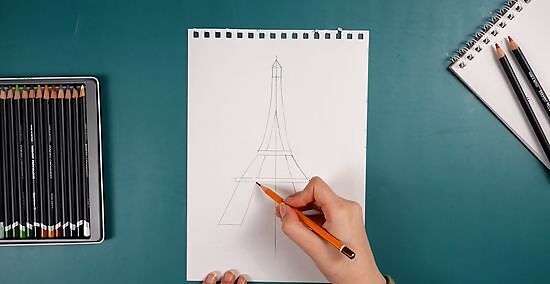
From the bottom rectangle, add lines at a 45-degree angle. Begin your first line in one of the bottom corners of the lower rectangle and bring it down away from the center guide. Stop once the end lines up with the bottom of the center guide. Start the next angled line a third of the way from the end of the rectangle. When the ends of the angles line up, connect them with a straight horizontal line. Repeat the process on the other side of the tower. Remember the Eiffel Tower is symmetrical so the left and right side should look the same once you’re finished.
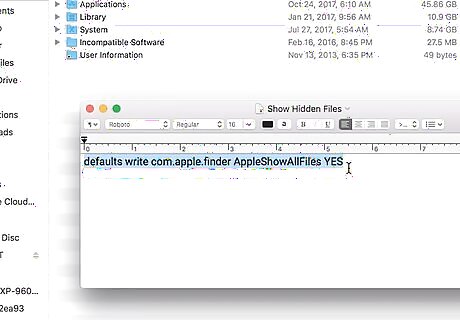
Add an upside-down curve between the tower’s legs to connect them. The Eiffel Tower has curved supports between the legs to keep it sturdy. Start the curved line about a third of the way down the leg and make it arch up toward the center of the bottom rectangle. Make the curve symmetrical across the center guide to connect the legs. Don’t let the top of the curve touch the bottom of the rectangle.
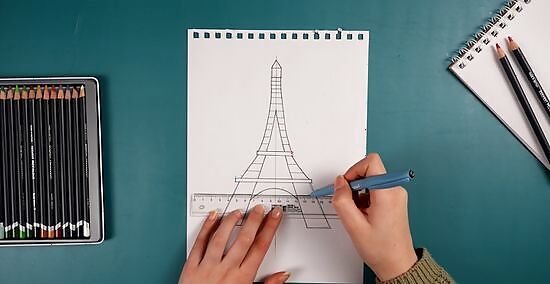
Sketch horizontal lines between the parallel curves to make the girders. Start from the tip of the tower and work your way down toward the legs to split them into equally sized rectangles. As you get closer to the bottom, allow a little more space between the horizontal lines to make them farther apart. When you’re finished, the legs should have 3-4 rectangles, the area between the viewing platforms will have 3-4 rectangles, and the area between the top viewing platform and the tip will have 15-16 small rectangles.Tip: Make sure the horizontal lines are in the same spot on each side of the tower or else it won’t look symmetrical.
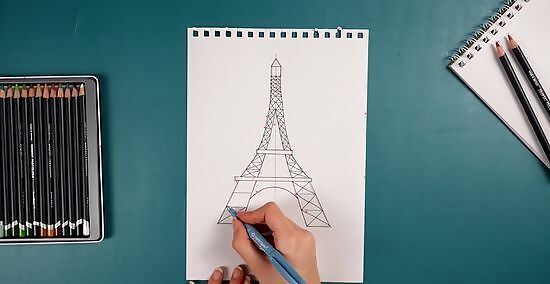
Draw an X in each rectangle of the girders. The Xs represent the cross supports in the tower’s girders. Make sure the center of the X is in the middle of each rectangle. You can also add small X-shapes along the viewing platforms and on the bottom arch if you want to add more detail to your drawing.
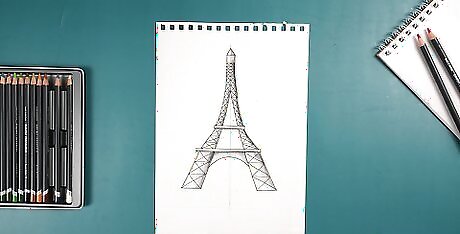
Fill in the rest of the triangles to complete your Eiffel Tower. If you want to add more detail, shade your drawing or add some color or scenery to the background. Try using different sized shading pencils to add highlights and shadows. Create shadows on the underside of the tower by using more pressure, and lightly sketch in areas where the sun might hit it to create highlights. Try using a smudge stick to blend your shading. Add things like trees, benches, and people to the background to bring your drawing to life.
How to Draw the Eiffel Tower in Perspective
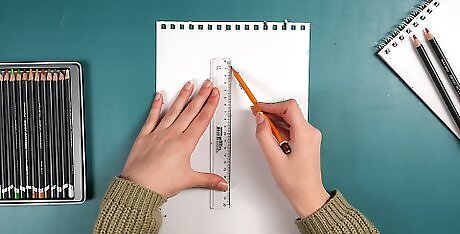
Draw a straight line down the middle of your paper. Work lightly in pencil and leave a small gap at the top and the bottom of the paper so you have room to add some details later. Use a ruler if needed. In art, perspective refers to the representation of a 3D object in 2D. In this case, you’ll be drawing the Eiffel Tower the way you’d see it if you were standing in front of it and looking up. For this method, you can position your paper either vertically or horizontally.
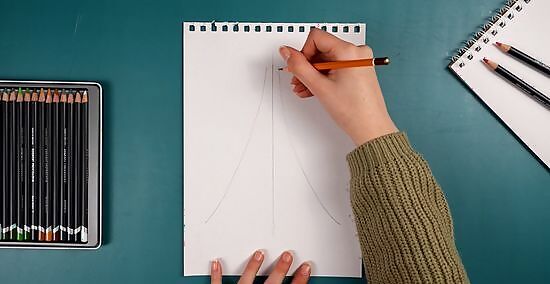
Add sweeping curved lines on either side of the center line. Start one of your curved lines on the right side of the guide line. Leave a small gap between the guide and the curved line at the end. As you bring the line toward the bottom of your paper, curve it away from the guide line. Make another curved line that’s symmetrical to the first one on the other side of the guide. Your drawing will resemble a triangle with curved sides.
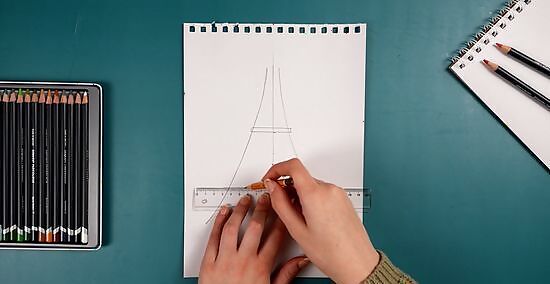
Split the center line into thirds using horizontal rectangles. Measure a third of the way down the length of the guide line and draw a narrow rectangle that extends slightly past the curved lines on each side. Then, measure another third down the center guide for the next rectangle. Make the second rectangle about twice as thick and long as the first one so it looks like it’s closer to you. The rectangles are the bottoms of the Eiffel Tower’s viewing platforms.
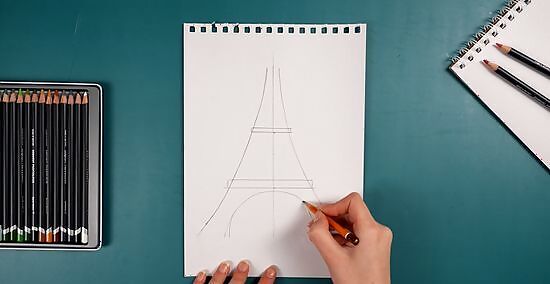
Draw a half circle below the bottom rectangle. At the bottom of your drawing, line your pencil up with one corner of the rectangle, then draw a curved line up and across your guide line until the end point is parallel with your starting point. This creates the tower’s arch and legs, and it should resemble the top half of a circle.
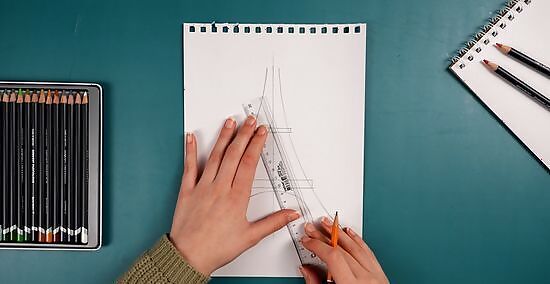
Draw a curved triangle with a point extending past the top rectangle. About a third of the way in from each end of the bottom rectangle, add the base of the triangle. Then, add a curved line, parallel to the outer curve, that extends up through the top rectangle. End the line halfway between the top rectangle and the end of the guide line. Draw the other side of the triangle to form a point on top. It’s okay to draw the lines through the rectangles at first. Just be sure to erase them so they aren’t in your final drawing.
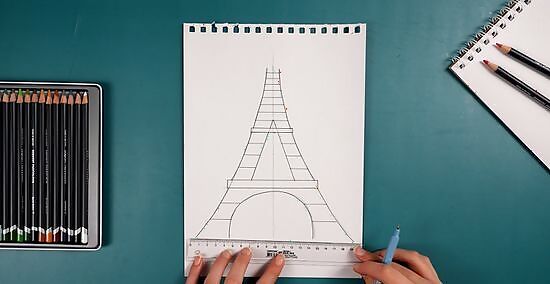
Add straight horizontal lines between the curves to form the girders. Begin at the tip of the tower and draw straight horizontal lines from one of the outer curved lines to the other to form small rectangles. Make the lines closer together near the top and farther apart near the bottom to make them appear closer to you. When you’re finished, there will be 15-16 lines from the tip to the top viewing platform, 3-4 lines between the viewing platforms, and 3-4 lines on each leg.
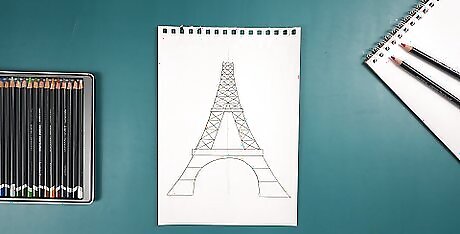
Make Xs in each of the spaces along the girders. The Xs form the cross supports. Make sure the ends of the X extend into the corners of the space so it looks like they’re connected to the tower.Tip: Draw the lines of the X lightly as you’re close to the tip and darker as you get closer to the bottom. That will help give the illusion that the tip is further away than the base.
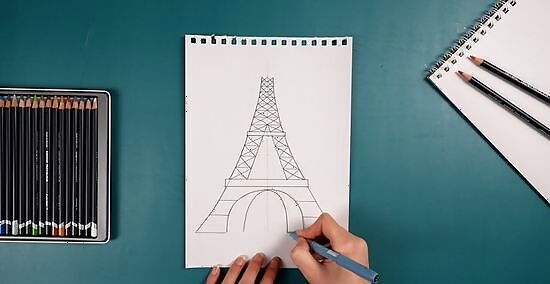
Add another, narrower arch inside of the archway to add the supports. Line your pencil up with either endpoint of the first arch and center it about halfway between the first arch and the guide line. Then, draw a narrow arching line that touches the center of the first arch and crosses the guideline. Your end point should be parallel to the point where you began to draw the second arch. If you want to add more depth to your drawing, make small rectangles instead of single lines. That way, the supports will look three-dimensional.
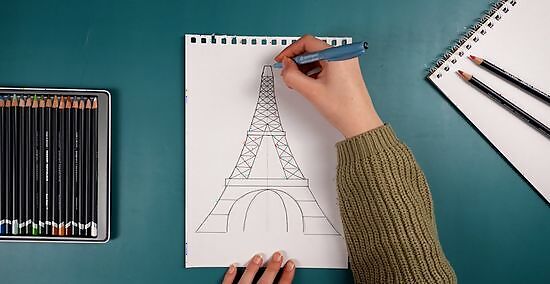
Draw a rounded square on top of the tower to form the point. Draw the square so that it extends slightly out from the tip. Don’t overlap any lines with parts of the tower you already drew or else the drawing will look messy.
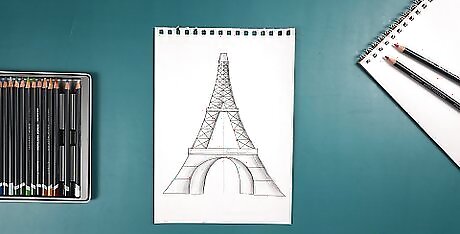
Clean up your drawing to complete it. Now that you’ve finished drawing the Eiffel Tower, erase any stray lines or smudges to perfect it. Feel free to shade the drawing to add more dimension.




















Comments
0 comment